New guinea pig owners are often shocked to see their little ball of fluff vibrating.
Here’s the good news: most of the time, guinea pigs vibrate for perfectly normal reasons. It’s their way of expressing emotions and their body’s natural response to their environment. These vibrations may also be accompanied by warbling vocalizations and other behaviors.
The not-so-good news is that not all those emotions are positive. Occasionally, trembling is also a sign your pet is not in sound health.
In short, whether your cavy is exhibiting positive or negative vibrations depends on the context. As pet owners, it’s our job to determine what our guinea pigs’ different vibrations mean so that we can provide them with proper care if necessary.
With that in mind, let’s get down to the nitty-gritty of guinea pig vibrations!
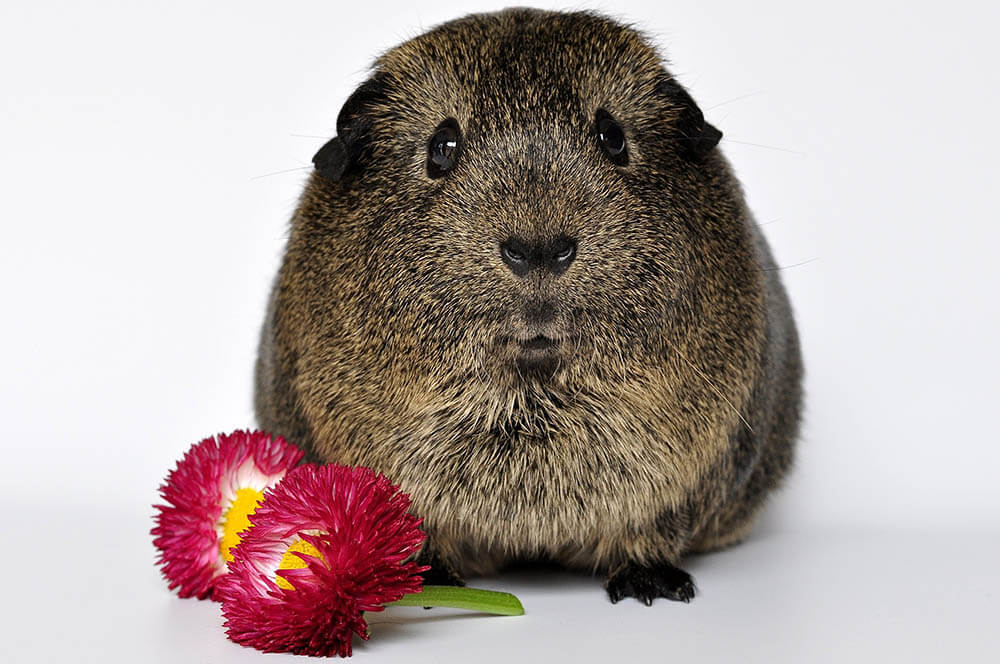
The Main Reasons Guinea Pigs Vibrate
If your pet guinea pig is vibrating, it could be due to any of the following reasons:
Happiness
As prey animals, guinea pigs are prone to fear, nervousness, and extreme caution, especially when introduced to a new environment or situation. It’s why it takes a while for new guinea pigs to warm up to their owners.
Once your guinea pig has learned to trust you, however, you can expect your presence to put it in a positive emotional state. It’ll be open to cuddling with you and catching some z’s on your lap. It’ll welcome and even enjoy your petting. You can even expect it to express pure joy by hopping around enthusiastically – a behavior known as “popcorning” in pet owner circles.
Of course, a guinea pig that’s bonded with its human may also vibrate to communicate feelings of relaxation, contentment, and enjoyment. You’ll likely observe this type of happy vibration while you’re gently petting your guinea pig or it’s snuggling up to you.
Other signs of happy guinea pigs include high tweeting sounds, murmuring, purring, a lowered head, and a relaxed posture.
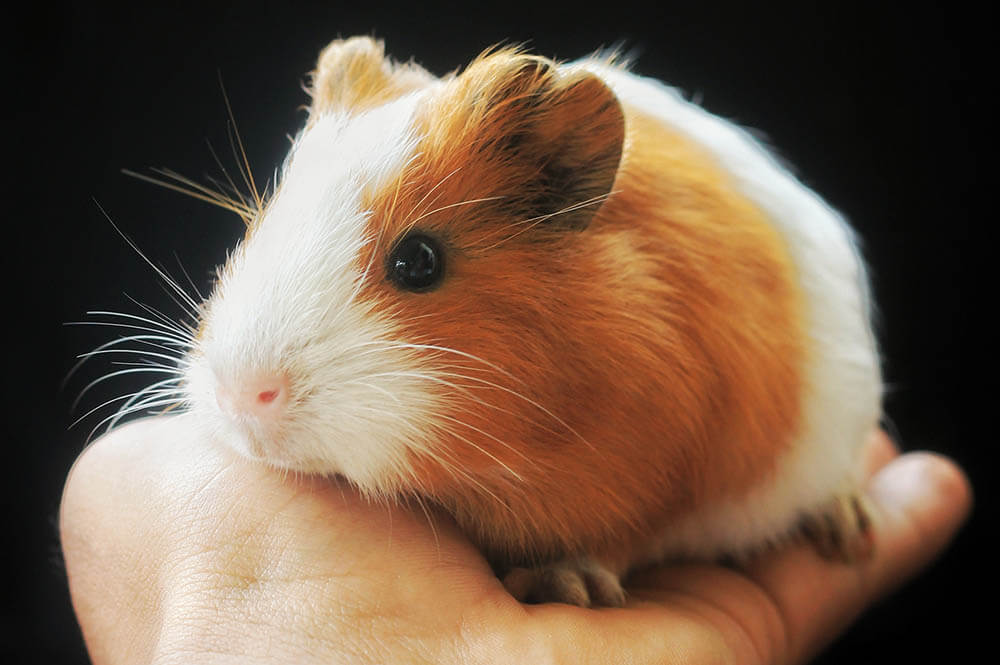
Anxiety or fear
Like most animals, guinea pigs vibrate when they’re scared or anxious. In addition, a scared cavy may also make quick, snipped sounds or even shriek.
Have you just brought home a guinea pig from the store? It may be anxious about its new, potentially dangerous environment. Did you accidentally startle your cavy with your sudden movements? Are there loud noises it can hear through the walls of your home? Feelings of alarm and unease can make a guinea pig vibrate.
Here are the most common causes of fear and/or anxiety in guinea pigs:
- Unfamiliar locations
- Sudden, loud noises
- Sudden movements
- Great heights
- Bigger, predatory animals (e.g. dogs, cats)
- Fellow guinea pigs or other small animals (e.g. hamsters, rabbits)
- Being handled improperly
Thankfully, the more familiar your pet grows with you and its new home, the less nervous it’ll be. To prevent fearful vibrations, remember to be gentle with your cavy; avoid doing anything that will frighten it, and give it all the affection it needs to feel safe and secure.
Since guinea pigs are social animals, providing a lone cavy with one or more companion pets can also help it feel more at ease.
And make sure your dog, cat, or bird doesn’t want to eat your cavies!
Anger or aggression
Experiencing negative emotions such as anger and frustration can induce bouts of trembling accompanied by teeth chattering or grinding.
While cavies are docile, gentle creatures, they know how to stand up to other guinea pigs. For example, if a guinea pig feels threatened by another, its body will vibrate as a warning to that other to back off. If the offending cavy doesn’t get the message, the threatened, angry one will grind its teeth to show it won’t back down from a fight.
A pet guinea pig also won’t hesitate to tell its owner when it’s upset. We previously mentioned cavies enjoy snuggling with the humans they’ve bonded with. However, most guinea pigs can’t tolerate long cuddling sessions. Try to limit such sessions to a maximum of 15 minutes. Otherwise, you may find your guinea pig grinding its chompers at you. Ignoring this warning could get you bitten.
Below is a list of things fur parents sometimes do that annoy guinea pigs:
- Taking a long time to feed them
- Being noisy
- Touching their underbelly
- Touching their butt
- Not leaving them alone after they’ve made it clear they don’t want to be held or touched anymore
In addition to or aside from vibrating, other signs of anger in guinea pigs include:
- Tense body
- Grinding/chattering teeth
- Baring teeth
- Raising the head
- Opening the eyes wide
- Making high-pitched purring noises
- Hissing
- Fluffing the fur to make themselves look larger
- Standing on hind legs
If your guinea pig is showing such behaviors to you, it means it’s upset. Return it to its cage and leave it alone. Don’t start petting it or interacting with it in any other way until it has relaxed.
If one cavy is angry with another, separate them as soon as you can so the tense situation doesn’t escalate into violence.
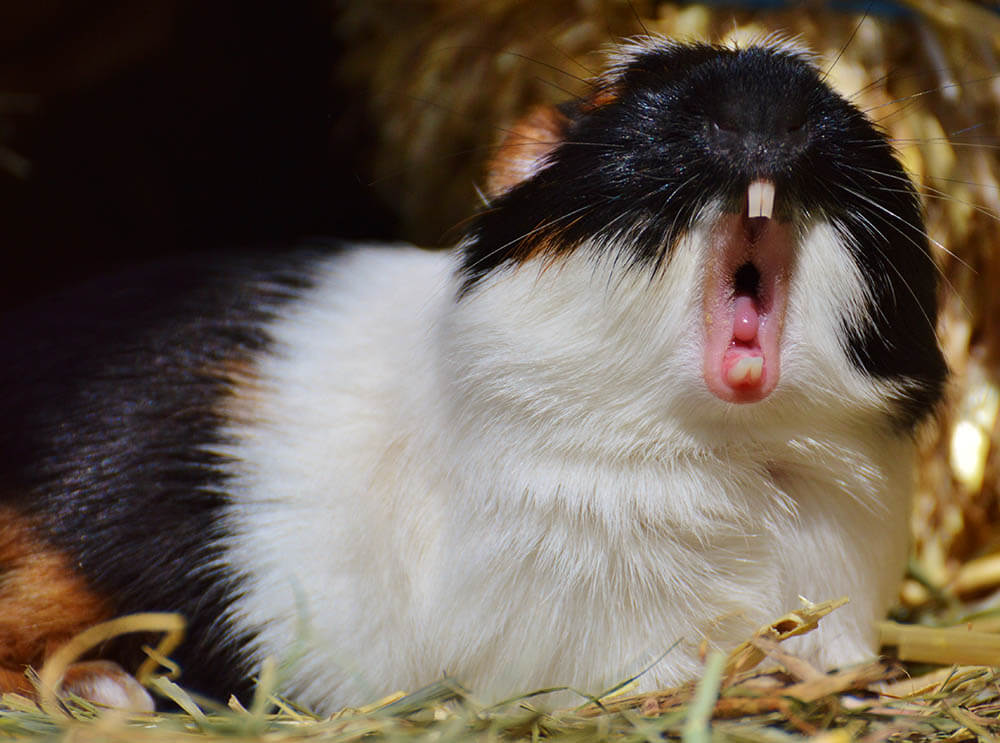
Dominance
Don’t let their meekness fool you; many cavies like being the boss and will vibrate to display their superiority to other guinea pigs. They may also produce a low, rumbling sound to signal their higher status. These behaviors are natural (though understandably distressing to anyone new to owning guinea pigs).
Male guinea pigs tend to fight for dominance. Once one cavy accepts another’s authority, they’re less likely to fight. This is why violence grows more infrequent and less intense the more the males familiarize themselves with each other.
Even females fight from time to time.
Generally speaking, however, instead of getting two males, it’s better to get two females, or a neutered male and a spayed female. Such combinations greatly reduce the risk of fighting among your furballs.
At any rate, you should have more than one cage so you can separate fighting guinea pigs, and consider the possibility they’ll have to stay separated. It’s also a good idea to have a vet examine any male or female guinea pigs that are prone to aggression.
Courtship
Guinea pigs vibrate as part of their mating ritual.
When it wants to mate, the male guinea pig vibrates as well as produces low, gentle, vibrating sounds to attract females. He may even sway his hips and strut around a favored female cavy.
In response, an interested female will vibrate and press her body against the male’s. Once she’s ready to couple, she’ll sway her hips forward and backward.
Now and then, even neutered male guinea pigs will vibrate, move their hips, and produce deep rumbling sounds to attract females. Of course, any cavies they mate with won’t get pregnant.
Guinea pigs reproduce quickly. Preventing overcrowding is an essential part of responsible pet ownership, so neuter or spay your tiny animals as soon as you can.
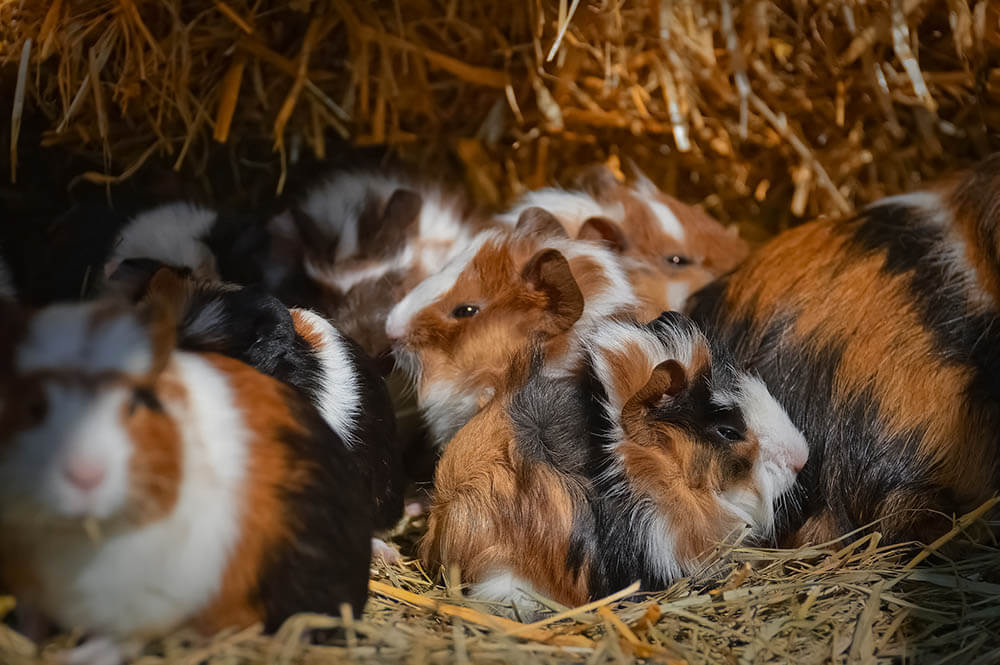
Cold
When a guinea pig feels cold, it’ll shudder just like any human or critter.
Guinea pigs don’t fare too well in cold temperatures and are most comfortable in environments between 65 and 75 degrees Fahrenheit (18 and 23 degrees Celsius).
After bathing your guinea pig, prevent it from freezing by gently toweling it dry and placing it someplace warm, preferably where there are no cool drafts that can bother it.
You should also fill your guinea pig’s cage with lots of soft hay. Our furry pets can do a lot with hay, from eating it to using it to build nests they can retreat into whenever they feel cold.
Good examples of hay for your guinea pig include:
- Oxbow’s Animal Health’s Western Timothy Hay
- Kaytee’s All-Natural Timothy Hay
- Eaton Hemp’s Western Timothy Hay
During cold weather, your guinea pig can benefit from small animal heat pads such as:
- Snuggle Safe’s Safe Pet Bed Warmer
- Snuggle Safe’s Pet Bed Microwave Heating Pad
- K&H Pet Products’ Electric Small Animal Heated Pad
Of course, too much heat is also bad for guinea pigs, so don’t expose them to direct sunlight or any heat source (such as a generator) for extended periods, especially during warm weather.
Illness or pain
Guinea pigs that aren’t feeling well due to illness or injury may vibrate violently in a way that resembles a seizure episode.
Other indications your cavy is ill include:
- Diarrhea
- Coughing
- Wheezing
- Hair loss
- Eye, ear, or mouth discharge
- Shrieking
Guinea pigs exhibiting such symptoms should be taken to the vet immediately for treatment. Hesitation could make their ailment worse and possibly even lead to death.

How to Handle a Guinea Pig Properly
There are right and wrong ways to hold and touch guinea pigs. The right ways can strengthen your guinea pig’s trust in you until it no longer feels threatened by your presence. The wrong ways can cause stress and anxiety, increasing the risk of getting bitten by your pet.
How to touch/pet a guinea pig
Always be gentle when touching a guinea pig. No pinching, squeezing, or rough handling!
Guinea pigs appreciate being stroked in the head, nose, or back. You can try stroking your pet while it’s eating for double the enjoyment.
Don’t poke or touch your cavy in the butt. It’ll interpret this as you asserting your dominance over it, which it won’t like.
Before picking up and carrying a guinea pig, make sure you develop its trust in you. Over time, your cavy will learn to trust you as long as you feed it regularly, handle it gently and with care, and avoid exposing it to stimuli or experiences it may perceive as threatening.
How to pick up a guinea pig
The best way to pick up a guinea pig is to let it climb onto your palm. Slowly lower your hand into its cage or enclosure, then let it approach you and step onto your palm and arm. Then, using your other hand to support its body, gently lift your pet.
Don’t chase a guinea pig that doesn’t want to be picked up. This can make it feel like it’s being hunted. For the same reason, avoid making sudden movements (especially sudden movements in its direction) and any sound that can make it feel threatened.
You should also avoid grabbing your guinea pig or making grabbing motions at it.
How to hold/carry a guinea pig
Remember: cavies are tiny creatures; what’s a short drop for humans is a long, potentially deadly drop for a cavy. You can help it feel secure by cupping it in your hands, or using your hands and arms to cradle it against your chest.
When holding or carrying your cavy, make sure its feet are touching you. Guinea pigs prefer being on solid ground, so if they feel air beneath their feet, they could panic.
Avoid holding or carrying your pet for long durations. Cuddling sessions should only be between 10 and 15 minutes. Try not to carry your cavy for longer than 5 minutes. If your pet starts vocalizing or trembling while you’re holding or carrying it, it’s likely upset. Return it to its cage or enclosure and avoid interacting with it until it’s calmed down.
If you want to play with your cavy, you can cuddle with it for a few minutes before letting it run around freely in a play area. You can interact with your pet while it’s in this environment, though you should back off if it shows signs it’s upset with your meddling.
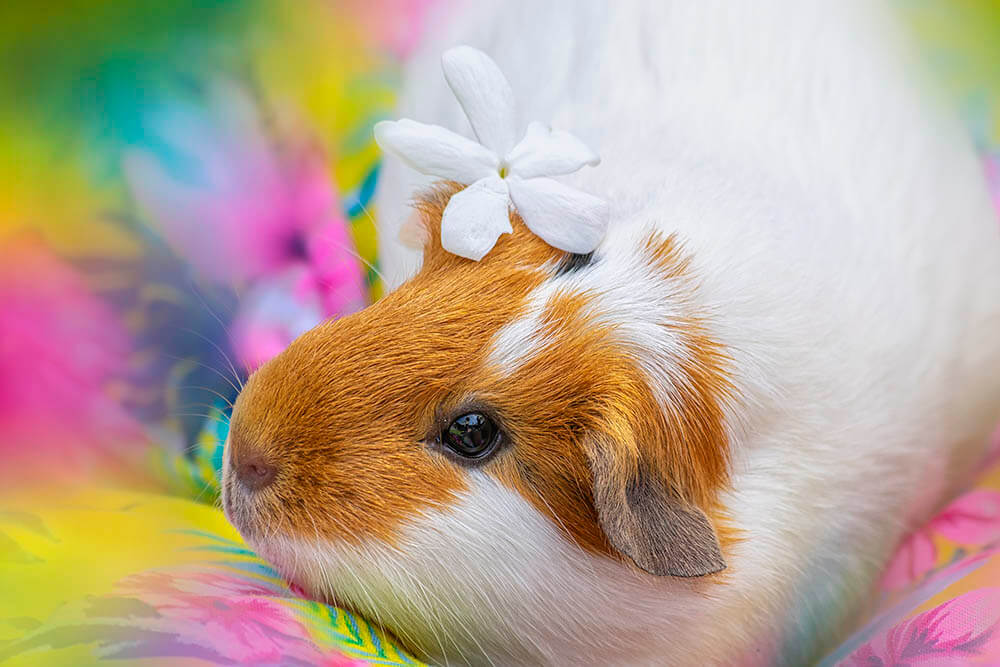
When Guinea Pigs Vibrate – The Conclusion!
Guinea pigs vibrate for various reasons – it’s their natural way of communicating feelings such as joy, fear, anger, and distress. To figure out what these vibrations mean, you’ll have to pay attention to your pet’s overall body language and the sounds it makes.
Using all this information, interact with your guinea pig as appropriate. Stroke it if it’s happy and content. Leave it alone if it wants to be left alone. And if it’s in pain, make sure to bring it to the vet!
